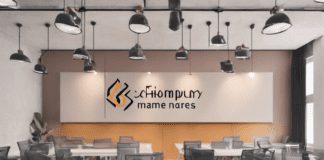Online advertising is a set of tools for delivering promotional messages worldwide using the internet as a global marketing platform.
As web technologies evolved in the 1990s, online advertising emerged as a virtual equivalent of traditional marketing methods like Television and radio ads, newspaper, billboard advertising, and more. In 2019, marketers expected businesses to spend more money on digital advertising than traditional advertising.
Let’s see why online advertising has become so popular and explore the most commonly used types and much more.
Why is online advertising essential?
In Digital Marketing, paid advertising is a quick way to gain visibility. This visibility, in most cases, is your appearance on the first page of search engines.
A well-run paid web advertising campaign immediately generates highly qualified traffic. Here are some advantages of online advertising:
- Easy global coverage: Today, people have a habit of searching for details about products and services through search engines like Bing, Google, and others. Web advertising is a way to showcase your offers to more than 4.3 billion Internet users worldwide. You can easily target all over the world via the internet.
- Affordable cost for any budget: According to Seriously Simple Marketing, the minimum price to reach an audience of 2,000 people is three times cheaper than traditional advertising methods. So any business, from a small family business to a large corporation, can use online advertising and get the most out of its financial resources.
- Generating traffic to a website: The more visitors you get to your site, the more potential customers you have, which will lead to increased sales. Online advertising aims to grab the attention of users and get them to your website. Offers displayed in digital ads should spark curiosity and give people a good reason to click on your links.
- Ability to target: Unlike traditional marketing media, which show ads to everyone without filtering, online advertising tailors the message to a specially targeted audience, i.e., the people who are most likely to become customers.
- Retargeting is possible: Online ads are a way of saying, “Hey, it looks like a few days ago you found out about this toaster. We have a wonderful one for you here! “If a lot of prospects visit your home appliance online store without purchasing anything, remind them of your brand with banner ads displayed on the websites they browse.
- Many points of communication with your audience: Online advertising helps you appear in the right place at the right time to connect with your audience. If you own a small bakery, showcase your products on social media like Instagram and Pinterest. To share news and build lasting relationships with your audience, use email marketing. By wisely combining different types of digital advertising, you can show that your business is always there and ready to be of service.
- It is measurable: Unlike offline marketing, where cost and effectiveness are somewhat approximate, you can accurately track the return on your internet marketing with web analytics platforms like Google Analytics.
Types of online advertising
The internet offers many possibilities to connect with potential customers. So let’s look at some of the most prominent types of online advertising available in the market.
Search engine marketing
A search engine bar is the starting point of the shopping journey for users. When entering a keyword, people mainly focus on the results shown on the first page. Search engine marketing is about getting your web pages to the top on Search Engine Results Pages (SERPs), either organically or paid.
Email Marketing
It is a marketing approach based on communication by email. It is the least intrusive platform for advertising because subscribers willingly agree to receive email newsletters and promotions, and they can also unsubscribe at any time.
Social media ads
It means advertising on social networks like Instagram, Facebook, Twitter, Pinterest for B2C, and LinkedIn for B2B. Most companies tailor their news and promotions to the target audience via social media in two ways:
- Organic: If you produce cookware, you can post valuable content like “hacks,” cool ways to use your products or recipes to encourage shares and create an engaging brand image.
- Paid: In this case, you can use the social media feature for business by displaying promotional items targeted to your audience based on age, gender, and other favorite activities.
Display advertising
40% of Americans try to avoid banner ads, wallpapers, pop-ups, flash, and video ads using adblocking software because display advertising is unsolicited. In addition, many non-blockers subconsciously ignore the information contained in the ads due to a psychological phenomenon known as “banner blindness.” Since the 1990s, display advertising has gained a bad reputation as a dull medium. Unless the ads are highly relevant to the user, they are largely ignored or, worse, utterly invisible due to ad blockers.
Website owners with massive traffic to their sites want to monetize it. So they sell part of their space using Google AdSense, while advertisers buy it through Google Ads. Google displays relevant ads based on two pricing approaches, CPC (cost per click) and CPM (cost per thousand views), allowing businesses to retarget their promotions.
Native advertising
In a way, it’s a non-irritating alternative to display advertising. Companies pay popular sites like The New York Times and BuzzFeed to place promotional material in their posts. As long as this is happening entertainingly, readers won’t realize that they are under the influence of ads. It is why this phenomenon is known as “native.”
Video advertising
These ads are in video format and placed on services like Vimeo, YouTube, Vine, and DailyMotion. It is an expensive type of advertising, but it is also effective as high-quality videos can go viral. A video ad campaign called “Create a Site” draws people to a well-known and practical site builder.
Web push
This technology allows you to grab the attention of users when they are online. These ads appear in the corner of your screen to redirect you to a particular web page after you click on them. For example, a cafe might send you an early morning notification offering a 20% discount for orders made before 10 a.m. Users usually subscribe to push notifications to stay in touch with the brand and be the first to hear about news and updates.
Mobile advertising
SMS marketing is the central part of local business advertising. If you run a shoe store, mobile ads are perfect for advertising to local audiences with current specials. You can also create your SMS campaigns in no time with builder.ai.
How much does online advertising for business cost?
- Advertising on search engines. The average CPC across all industries is $2.32. This price depends on the volume of keywords: how many times per month people search for a particular word or phrase; the level of competition, i.e., the number of companies that use this keyword; and the bid amount for the auction based on the ranking of the ads.
- Email marketing. The average price for 2,000 subscribers starts at $27, 5,000 is $47, 10,000 is $69, and 50,000 will set you back $253.
- Social media advertising. Based on the industry, Facebook’s average CPC is $1.86, and CPM is $11.20. On Instagram, the average cost per click is between $0.50 and $1.00.
- Display advertising. The size and position of an ad on the web page influence its pricing and the display period. You don’t necessarily have to choose Google Ads; you can use other services like Quora, Microsoft Advertising, AdRoll, etc., or contact website owners directly.
- Native advertising. The main reason for using native advertising is the large amount of traffic that the company that places the ads generates on their website. It is among the most expensive types of online advertising because it requires high-quality content from the advertiser, including professional writing, storytelling, editing, and design. It is, however, very effective thanks to its nature which makes it easy to perceive.
- Video advertising. Businesses pay YouTube on a pay-per-view basis. Typically, video advertisements cost between $0.10 and $0.30 per view. It means that you will pay $1,000 to have 10,000 people view your ad.
- Web push ads. You can use this feature to send free promotions and quick updates with builder.ai.
- Mobile Marketing. In the United States, the cost for each SMS is $0.022.











